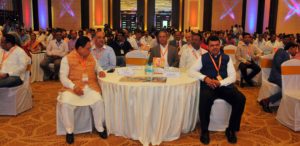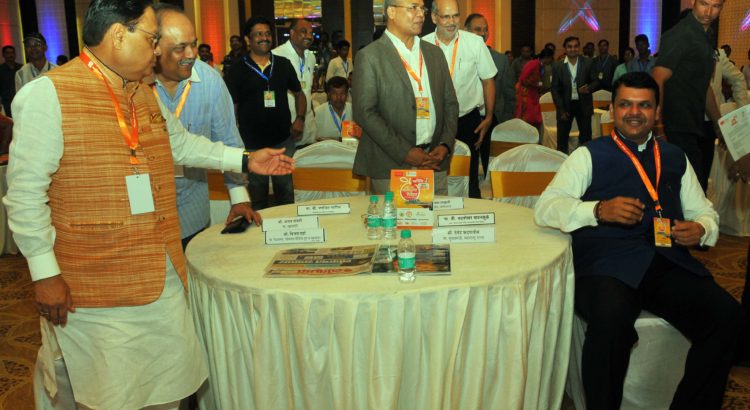Honorable Chief Minister of Maharashtra Shri Devendraji Fadanavis, Chairman of Lokmat Group Shri Vijaybabu Darda, Guardian Minister Shri Chandrashekharji Bavankule, Honorable Mayor Shri Praveenji Datke, respected MPs, MLAs, Officers and dear friends,

Firstly, I congratulate Lokmat Group and Shri Vijaybabu for creating this progressive, much needed and useful platform. Bringing decision makers and stakeholders together on such a platform will definitely provide a push for the development. The discussions on this platform will help create Vision 2020.
The need of such a dialogue has become all the more important in this era of rapid urbanization. In any developed country, where basic needs such as water, electricity and housing have been fulfilled, smart city seeks public participation. However, public participation is also important when the development is going on. While executing ‘24×7 water system’ we have experienced this. Communication with citizens makes execution easier.
We should understand that all projects related to city development are social projects. Whenever a new project is launched, citizens will naturally have questions about those projects. If we satisfy their queries, citizens will look at these projects with a positive view. And to have meaningful dialogues with citizens, platforms such as this are necessary.
Active people participation strengthens any project. Citizens become part of shortcomings, challenges as well as ownership of that project. In PPP projects, we present it as a 4P model. P-People/Public as Government, P-Private and P-People as citizens. This 4th P strengthens PPP structure. It is difficult to build projects of duration of 25 to 30 years without this 4th P.
Even Government, NMC and NIT should stress on communication. In the whole life cycle of a project, there should be a provision for public dialogue and feedback. It will speed up the execution of the project.
Even as Nagpur could not find a place in the first list of Smart Cities, Nagpur city is well-known across the country and globe for its progressive initiatives. Nagpur is known for the physical execution of Metro in record time as well as for Ethanol Buses. The 24×7 water system was presented with the Best Recognition by the Government of India in the presence of Honorable Prime Minister Narendra Modi. Honorable commissioner Mr. Hardikar gave a presentation to 500 Mayors. The Government of India and the Government of Maharashtra has developed the policy of using treated water in Thermal stations taking a cue from the Sewage Treatment with Reuse of Water project in Nagpur. Sewage Treatment and Reuse Project has a unique peculiarity. The income that will be generated by providing processed sewage water to thermal stations will cover the total cost of the project thus making it absolutely free for the Municipal Corporation. More importantly, 20 crore litre water reserved for electricity generation can be used for drinking purpose in the city. Considering the standard norm of 135 litre per day per person, it will fulfill the drinking water need of 15 lakh population. Water that is used by power stations will be available for lakhs of people for drinking. It will bring down the rate of water-bourne diseases which is 21 per cent at present. With big rise in urban population, this project is considered path-breaking. Many such long-term projects are thought of and there are many more things to do in Nagpur. It is necessary to discuss how these models will become efficient, accountable and sustainable. Models built on these norms will be successful.
While thinking of Vision 2020, it should have a base of this interaction. And while defining the vision, it is imperative to understand the needs, thoughts and priorities of the stakeholders. A city cannot tread the development path on the vision of another city – be it a vision of London or Singapore for that matter. Even to provide services like Singapore, vision and priorities should be of Nagpurkars. A foundation for this has been laid in today’s interaction. Once again, I thank Vijaybabu and Lokmat Group for help building this vision. Thanks!
